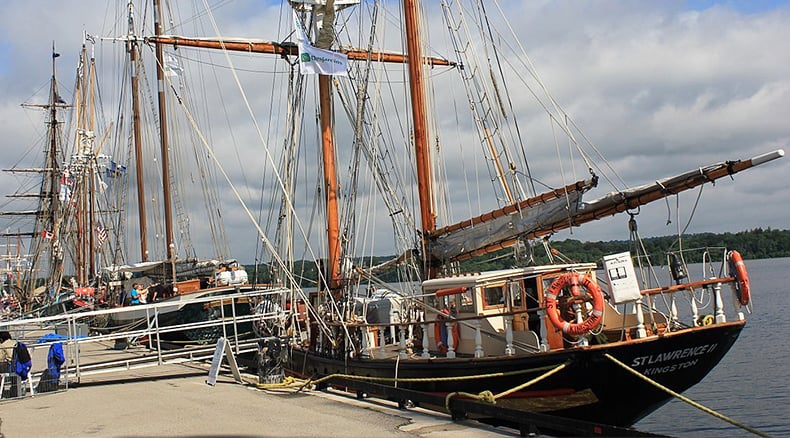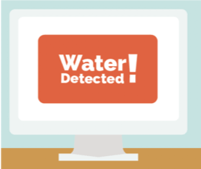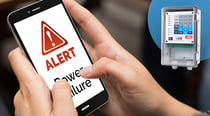
The Sensaphone company got its start because of a sunken boat. Twice in the same year founder Ken Blanchard’s unattended docked boat sank because the bilge pump failed after stormy weather, and the vessel took on water. Ken, an engineer, was motivated to develop a remote device that could monitor conditions and notify people when their boat was in trouble while they were away.
Why Boats Sink While Docked
Key culprits that can sink a docked boat are water leaks, cold temperatures and undetected damage to the vessel, according to Boating Magazine.
Water Leaks
Water can enter the bilge due to undetected leaks from damage to shaft seals, hose connections, drain fittings, pipes, valves, machinery, tanks, hatches or hull, to name a few.
This can cause the bilge pump to fail:
- if it or the float switch malfunction
- if it is not powerful enough to handle the amount of water
- if it drains the battery that runs it
Should any of the above occur, a boat can go under before anyone even knows there’s a problem.
Water can also cause a docked boat to sink if the rubber bellows that seal water out of the sterndrive engine fail. Another area of water entry is the opening through which the inboard boat propeller shaft passes, if the seals malfunction. Left undetected, a slow leak at these entry points can overwhelm the bilge pump and down goes the boat.
Mother Nature can play a role, too. Stormy weather causes rain to flood the boat, and low tide can trap the vessel beneath the dock, leaving it to take on water as the tide rises.
Cold Temperatures
Winterization is important for boats docked in cold climates. If the temperature is not properly controlled, ice can damage hoses, valves, gears, seals, causing the boat to take on water. Cold weather can also kill the bilge pump’s battery. Some operators use portable heaters powered by battery or electricity drawn from the dock to prevent key areas like the engineering room from freezing. But if the power sources fail, expensive equipment damage can occur.
Damage to the Vessel
Most operators can’t know exactly what lurks below the waterline. Age, corrosion, vibration, temperature changes and other factors can cause structural damage to the hull and to seals around potential water entry points. This damage can allow water to enter the vessel.
Remote Monitoring Solutions for Docked Boats
Using a cloud-based monitoring system lets operators remotely track temperature, water leaks and power outage 24/7. They can also keep an eye on conditions like humidity, vibration, carbon monoxide and unauthorized access in real time through an app or website. When these systems detect that a sensor reading has moved out of the preset range, they send a notification via phone call, text or email to designated crew members to remedy problems before the boat sinks.
Vessel Monitoring in Action
Sensaphone customer Brigantine Incorporated uses the Sentinel remote monitoring system in its Tall Ship Expeditions Canada business as the building block of the disaster avoidance plan for the St. Lawrence II.
The Sentinel system provides three key benefits:
- situational alerting
- remote monitoring
- historical reporting to provide insights that keep the ship in safe working condition year-round

Based in Kingston, Ontario, Canada, the St. Lawrence II is docked and unstaffed during the winter. Before installing the Sentinel system, the crew monitored the St. Lawrence II manually onsite. The vessel sank twice while docked and unattended due to unknown damage in the ship’s hull below sea level, which caused water to flood the bilge.
The Sentinel base unit is in the vessel’s engine room, housed in a dedicated cabinet with other key equipment, including many of the sensors. The Sentinel system monitors the float switches in the bilge compartments to keep tabs on the water level. Relays are used to monitor AC power and systems such as the generator, main engine and various circuit breakers. Temperature sensors throughout critical areas of the ship such as the engine room and wardroom to alert them when readings fall below freezing.

After installing the Sentinel system, the crew has received alerts that the marina where the vessel is docked had lost power to some of the pedestals from which the ship draws power. This could lead to a problem because the crew uses portable heaters to raise the temperature in the engineering room. Without power, water that can’t be completely drained from the ship’s systems could freeze and damage equipment or cause leaking. With immediate notification about the power failure, they were able to get to the ship right away and run additional power cables from working electrical outlets.
Smooth Docking
Remote monitoring lets ship crew members and boat owners know with absolute certainty that a leak has not occurred in a docked vessel, power is operational and temperature is at a safe level. The ability to quickly view the status of sensors brings peace of mind and instant alters when readings fall out of range are a critical first step to fast response.
For more information about remote monitoring solutions for your unattended vessel, contact our team.







